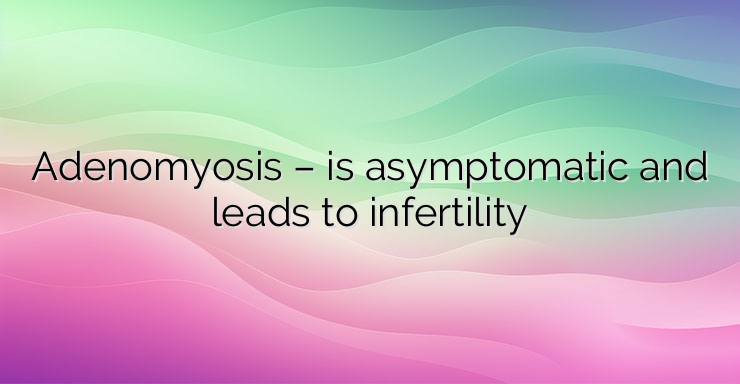Adenomyosis is a condition in which tissue similar to the lining of the uterus (endometrium) begins to grow in the muscular wall of the uterus (myometrium). This causes the uterus to increase in size – sometimes doubling or tripling its normal size. Adenomyosis can cause painful periods, heavy or prolonged menstrual bleeding with clotting, and abdominal or pelvic pain. Many women don’t know they have adenomyosis because the condition doesn’t always cause symptoms. The exact prevalence of adenomyosis is unknown. However, researchers do know that it is more common in women who have: Had a uterine procedure; Over the age of 40. Approximately 2 to 5% of girls with very painful periods have adenomyosis. About 1 in 3 women with adenomyosis have no signs or symptoms. Some report: Painful menstrual cramps (dysmenorrhea); Heavy menstrual bleeding (menorrhagia); Pelvic pain with or without severe cramping; Painful intercourse (dyspareunia); Infertility; Enlarged uterus; Swelling or fullness in the abdomen (adenomyosis abdomen). Researchers don’t know why some women develop adenomyosis or what causes it. However, some research suggests that hormones, genetics, or inflammation/trauma may contribute to the development of the condition. What are the risk factors for this condition? Adenomyosis most often occurs in women who are: Between 40 and 50 years old; Have given birth at least once; Underwent uterine surgery, such as removal of uterine fibroids or dilation and curettage; They have endometriosis. Symptoms of adenomyosis worsen over time. Heavy menstrual bleeding from adenomyosis increases the risk of anemia. Because the hormone estrogen stimulates the growth of endometrial tissue, the symptoms of adenomyosis often disappear after menopause. In the meantime, taking certain medications can relieve pain and help with heavy bleeding and other symptoms: Pain relievers. Nonsteroidal anti-inflammatory drugs, or NSAIDs, relieve spasms. Hormonal drugs. Some hormonal medications can help with menstruation and abnormal bleeding. Options include birth control pills, an injection, or intrauterine pessaries. Adenomyomectomy. This is a surgical intervention to remove adenomyosis from the muscle of the uterus. This procedure is similar to a myomectomy, which removes uterine fibroids. Hysterectomy: Radical surgery to remove the uterus. If left untreated, adenomyosis can lead to infertility or miscarriage. The reason for this is that the embryo cannot implant in the lining of the uterus. Other problems may include chronic pelvic and abdominal pain. References: 1. Gunther R, Walker C. Adenomyosis. (https://www.ncbi.nlm.nih.gov/books/NBK539868/) [Updated 2022 Jun 21]. In: StatPearls [Internet]. Treasure Island (FL): StatPearls Publishing; 2022 Jan- 2. Kobayashi H, Matsubara S, Imanaka S. Clinicopathological features of different subtypes in adenomyosis: Focus on early lesions. (https://www.ncbi.nlm.nih.gov/pmc/articles/PMC8279363/) PLoS One. 2021 Jul 14 3. Merck Manual. Adenomyosis. (https://www.merckmanuals.com/home/women-s-health-issues/miscellaneous-gynecologic-abnormalities/adenomyosis) 4. Schrager S, Yogendran L, Marquez CM, Sadowski EA. Adenomyosis: Diagnosis and Management. (https://pubmed.ncbi.nlm.nih.gov/35029928/) Am Fam Physician. 2022 Jan 1;


Leave a Reply